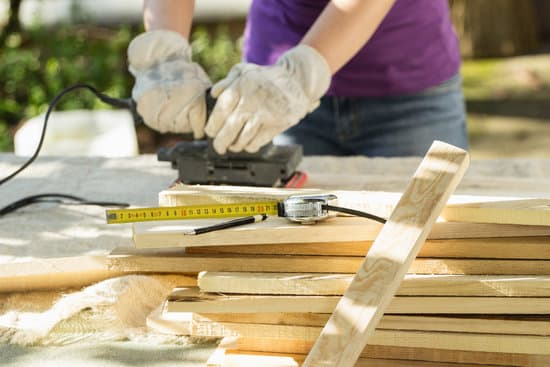How are home improvements valued for property taxes? It is a question that homeowners often ask when considering making upgrades to their homes. In this article, we will explore the connection between home improvements and property taxes, aiming to provide homeowners with a comprehensive understanding of how these improvements are valued.
Property taxes are an essential aspect of homeownership, as they contribute to funding public services such as schools, roads, and emergency services. They are based on the assessed value of a property, which is determined by local government assessors. Homeowners are responsible for paying these taxes annually, but the amount can fluctuate depending on various factors.
The impact of home improvements on property taxes is significant. When homeowners invest in renovating or upgrading their properties, it can lead to an increase in their assessed value. This means that their tax burden may also rise accordingly. However, not all home improvements have the same effect on property tax assessments, and the valuation process can vary depending on different factors.
In the following sections of this article, we will dive deeper into what exactly property taxes are and why they are important. We will also unveil the relationship between home improvements and property taxes, exploring different approaches to assessing and evaluating these improvements.
Additionally, we will examine factors that influence home improvement valuations and discuss strategies for minimizing property tax burdens while still maximizing the value of home improvements. By the end of this article, homeowners will be equipped with valuable knowledge on navigating the complex world of home improvement valuations for property taxes.
What Exactly are Property Taxes and Why are They Important?
Property taxes are a form of local taxation imposed on property owners by the government. These taxes are usually levied based on the assessed value of the property and are an important source of revenue for local governments. The funds generated from property taxes are used to finance various public services and infrastructure, such as schools, roads, parks, and emergency services.
Property taxes are important because they play a crucial role in supporting the local community. By providing funding for essential public services, property taxes help maintain and improve the quality of life in a neighborhood or municipality. Without these funds, local governments would struggle to provide necessary services and infrastructure that contribute to a safe and thriving community.
The amount of property tax homeowners need to pay is determined by the assessed value of their property. Assessors evaluate properties periodically or when significant changes occur, such as new construction or renovations. This assessment takes into consideration factors such as location, size, age, condition, and any home improvements made to the property.
Assessment values can have a direct impact on the property tax amount. If home improvements increase the assessed value of a property significantly, it could result in higher property tax payments for homeowners.
On the other hand, if improvements detract from the value of the property due to poor craftsmanship or design choices that do not align with market preferences, it could potentially lower the assessed value and therefore reduce property tax payments. It is important for homeowners to understand how their home improvements can affect their property assessments and subsequently their tax liability.
To better grasp how assessments are calculated and what factors influence them, it is helpful to explore different valuation methods used by assessors when assessing home improvements for property taxes. These methods vary depending on jurisdiction but commonly include cost approach, sales comparison approach, income capitalization approach, or a combination thereof. Each method has its own strengths and limitations when evaluating home improvement values.
Taking into account various factors that influence assessment values is also crucial. Property assessors consider factors such as the quality of materials used, the size and complexity of the improvement, its age, and how it compares to other similar properties in the area. Additionally, local market trends and fluctuations can impact assessment values. Homeowners should be aware of these factors when planning home improvements to ensure they make informed decisions that align with their financial goals.
By understanding how property taxes work and how home improvements can affect tax assessments, homeowners can navigate the tax appeal process more effectively if they believe their assessments are incorrect or unfairly high. Challenging a property tax assessment requires knowledge of local assessment policies, evidence supporting a different evaluation, and adherence to specific deadlines outlined by local tax authorities. Having a solid understanding of valuation methods and factors influencing assessments can strengthen homeowners’ ability to appeal their property taxes successfully.
The Impact of Home Improvements on Property Taxes
Homeowners often wonder about the impact of home improvements on their property taxes. It’s important to understand how these two are connected and the relationship between them. Property taxes play a crucial role in funding local government services such as schools, road maintenance, and public safety. They are usually based on the assessed value of a property, which can be influenced by various factors including home improvements.
When homeowners make improvements to their properties, it can increase the assessed value of their homes. This increase in value can directly affect the amount of property taxes they have to pay. The rationale behind this is that by making improvements, homeowners enhance the value and desirability of their properties, which then leads to a higher assessed value.
Assessors use various valuation methods to determine the impact of home improvements on property taxes. One common method is the sales comparison approach, where assessors compare similar properties that have recently sold in the same area and evaluate how those sales prices relate to the assessed values of those properties.
Another method is the cost approach, which involves estimating the replacement cost of a property and deducting depreciation based on its age and condition. The income approach is also used for commercial properties and investment properties where assessors consider the income generated by these properties when determining their value.
Factors such as quality, size, features, and materials used in home improvements are taken into account when assessing their value for property tax purposes. Assessors may also consider factors like location, market trends, economic conditions, and any permits or inspections required for the improvement.
Understanding how home improvements impact property taxes is vital for homeowners to make informed decisions while planning renovations or upgrades. By having an understanding of valuation methods used by assessors and considering strategies to minimize property tax burdens without compromising on desired improvements, homeowners can ensure they maximize the benefits of their investments while managing their tax expenses effectively.
Valuation Methods
When it comes to assessing home improvements for property taxes, there are various valuation methods that can be used. These methods aim to accurately determine the value of the improvements made to a property, which in turn affects the amount of property taxes owed. Let’s delve into some of these approaches and explore how they are used.
One common method used by assessors is called the cost approach. This approach involves estimating the value of the improvements by calculating the cost it would take to replace or reproduce them. The assessor considers factors such as materials, labor, depreciation, and any other costs associated with constructing or remodeling the improvements. By determining an estimated replacement or reproduction cost, assessors can gauge the value of the home improvements for property tax assessment purposes.
Another approach used is called the income approach. This method focuses on evaluating the income-producing potential of a property based on its improved features. Assessors consider factors such as rental income or potential resale value when assessing the value of home improvements using this method. The idea behind this approach is that if certain home improvements increase a property’s ability to generate income, then they should be considered in assessing its value for property tax purposes.
Lastly, assessors may also use a market comparison approach when valuing home improvements for property taxes. This method involves comparing similar properties in terms of their amenities and features to determine how much value has been added through specific improvements. By looking at recent sales data and analyzing how certain amenities affect sale prices, assessors can estimate the market value added by particular home improvements.
Assessing the Value
When it comes to property taxes, assessing the value of home improvements plays a crucial role in determining the amount of tax homeowners owe. Property assessors are responsible for evaluating these improvements and assigning a value to them. This section will delve into how assessors assess the value of home improvements and provide insights into the factors they consider.
Evaluating Physical Improvements
Assessors primarily evaluate physical improvements made to a property, such as adding a new room, renovating the kitchen, or installing a swimming pool. They take into account the quality, size, condition, and functionality of these improvements to determine their value. Assessors rely on a variety of sources including building permits, blueprints, photographs, and in-person inspections to accurately assess the extent and impact of these physical modifications.
Considering Cost versus Value
One important factor that assessors consider is whether the cost of the improvement aligns with its added value to the property. Some upgrades may require significant investment but may not necessarily increase the overall value significantly. For example, while cosmetic enhancements like repainting or replacing carpets improve aesthetic appeal, they may not substantially affect the property’s market value. Assessors carefully examine and compare this cost-value relationship when evaluating home improvements for property tax purposes.
Accounting for Depreciation
Another factor considered by assessors is depreciation. Over time, certain home improvements may lose their initial value due to wear and tear or becoming outdated. Assessors take into account this depreciation when assessing the current value of these improvements for property tax purposes. They may consider factors such as age, maintenance history, and typical lifespan when calculating depreciation.
Overall, understanding how assessors evaluate home improvements helps homeowners comprehend why certain enhancements might contribute more or less to their property tax burden. Being aware of these evaluation criteria can assist homeowners in making informed decisions about their renovations while minimizing potential tax implications.
Factors Influencing Home Improvement Valuations
Factors Considered by Property Assessors in Home Improvement Valuations
When it comes to valuing home improvements for property taxes, property assessors take into account a variety of factors. These factors are crucial in determining the impact that the improvement has on the value of the property and subsequently, the amount of tax owed. Understanding these factors can help homeowners better prepare for how their improvements will be assessed and potentially appeal any discrepancies.
Cost of Improvement
One of the main factors considered by property assessors is the cost of the improvement itself. Assessors may ask homeowners to provide documentation such as receipts, invoices, or permits to verify the cost of the improvement. This is because higher-cost improvements generally result in a higher increase in property value and subsequently, a higher tax assessment.
Age and Condition of Property
The age and condition of the property before the improvement is also taken into consideration. Assessors look at whether the improvement was made to an older or newer home and consider how it contributes to enhancing or maintaining the overall condition of the property. For instance, if a homeowner installs a new roof on an old house, assessors may view this as necessary maintenance rather than an improvement that significantly adds value.
Functional Usefulness
Assessors also evaluate how functionally useful an improvement is to determine its impact on valuation. Improvements that enhance functionality or usability often have a greater impact on increasing property value compared to purely aesthetic enhancements. For example, adding an additional bathroom or renovating a kitchen may be considered more valuable improvements than cosmetic upgrades like repainting walls.
Comparable Sales
Property assessors frequently refer to comparable sales data when evaluating home improvements for taxation purposes. They analyze recent sales prices of similar properties in the area that have undergone similar improvements to estimate how much value has been added. This information helps assessors ensure that homeowners are being assessed fairly and consistently based on market trends.
By understanding these factors, homeowners can anticipate how their home improvements will be valued for property taxes. It is important for homeowners to keep meticulous records of the costs and details of their improvements to provide accurate information during the assessment process. Additionally, consulting with a professional tax advisor or appraiser can help homeowners navigate the complexities of property tax assessments and potentially identify opportunities for appeal.
Navigating the Tax Appeal Process
Property tax assessments on home improvements are not always accurate and homeowners have the right to challenge them if they believe their property is overvalued. This section will explore the tax appeal process and provide guidance on how homeowners can navigate it effectively.
The Basics of Tax Appeals
When homeowners receive their property tax assessments, they have a limited window of time to dispute the valuation. The first step in challenging an assessment is to understand the rules and deadlines set by your local taxing authority. It is crucial to familiarize yourself with the specific guidelines and requirements for filing a tax appeal in your jurisdiction.
Gathering Evidence for Your Appeal
To support your case, you will need evidence that demonstrates that your property has been overvalued. This evidence can include recent appraisals, comparable sales data of similar properties in your area, photographs showing any defects or issues with the property, or documentation of any necessary repairs or renovations that have not been taken into account by assessors.
Filing Your Appeal
Once you have gathered all the necessary evidence, you will need to prepare and submit your appeal. Most jurisdictions have specific forms or online portals where you can file an appeal. Make sure to follow all instructions carefully and include all required documentation. It is also advisable to keep copies of everything submitted for your records.
Presenting Your Case
After filing your appeal, you may be required to attend a hearing where you can present your case before a board or panel of assessors. During this hearing, it is important to be prepared and articulate why you believe your property assessment was incorrect. You should be ready to present your evidence clearly and concisely while addressing any counterarguments from assessors.
By understanding and navigating the tax appeal process effectively, homeowners can challenge property tax assessments on home improvements and potentially lower their tax burden. However, it is important to note that the outcome of a tax appeal is not guaranteed, and seeking professional advice from experienced tax consultants or attorneys specialized in property taxation may be beneficial during this process.
How to Maximize the Value of Home Improvements without Overpaying on Property Taxes
Many homeowners are eager to make improvements to their properties, whether it’s renovating a kitchen, adding an extra bedroom, or upgrading the landscaping. However, one concern that often arises is how these improvements will impact property taxes. Homeowners want to ensure that they are maximizing the value of their home improvements without overpaying on property taxes. In this section, we will explore strategies and tips to help homeowners navigate this delicate balance.
Know the Tax Laws in Your Area
Property tax laws vary from state to state and even from municipality to municipality. It’s crucial for homeowners to familiarize themselves with the tax laws in their area before making any major home improvements. Some jurisdictions may have specific provisions for certain types of renovations that could result in exemptions or reductions in property taxes.
Keep Track of Your Improvements
Accurate record-keeping is essential when it comes to valuing home improvements for property taxes. Keep receipts, contracts, and invoices for all renovation work done on your property. This documentation will help you substantiate the costs incurred and provides evidence of the quality and extent of the improvements made.
Understand the Assessment Process
It’s important to understand how your local assessor evaluates home improvements for property tax purposes. Assessors typically consider factors such as the size and type of improvement, its functional utility, market value comparisons with similar properties in the area, and any relevant depreciation or obsolescence factors.
Consider Tax Abatement Programs
Some jurisdictions offer tax abatement programs that provide temporary exemptions or reductions in property taxes for eligible home improvement projects. These programs are often targeted at specific types of improvements aimed at improving energy efficiency or historic preservation. Research if there are any tax abatement programs available in your area that can help offset potential increases in property taxes.
By understanding the tax laws, keeping accurate records, familiarizing yourself with the assessment process, and considering any available tax abatement programs, you can maximize the value of your home improvements without overpaying on property taxes. It’s crucial to consult with a local tax professional or assessors’ office for specific guidance as the rules and regulations may vary depending on your jurisdiction.
Ultimately, by taking these steps, homeowners can ensure that their property taxes accurately reflect the value of their home improvements while minimizing any potential financial burden.
Tips and Strategies
One of the main concerns for homeowners when making home improvements is the potential increase in property taxes. However, there are several tips and strategies that experts recommend to minimize the property tax burden while still making valuable improvements to your home.
- Timing is key: Experts suggest timing your home improvements strategically in order to minimize any immediate impact on your property taxes. It is important to understand that property assessments are often conducted periodically, so if you make significant improvements shortly before an assessment, it is more likely to result in a higher valuation and subsequently higher property taxes.
Consider timing your renovations for after an assessment has been completed or several years before the next one is scheduled. - Understanding local regulations: Each jurisdiction may have different rules and regulations regarding how home improvements are valued for property tax purposes. It is crucial to familiarize yourself with these regulations in order to make informed decisions about your home improvements. For example, some jurisdictions may provide tax incentives or exemptions for certain types of improvements such as energy-efficient upgrades or accessibility modifications.
- Seek professional advice: Consulting with a licensed appraiser or a qualified tax professional can also be invaluable when it comes to minimizing your property tax burden while making home improvements. These professionals are knowledgeable about local regulations and valuation methods used by assessors. They can provide guidance on how to present your case to the assessor, appeal any unfair assessments, or explore alternative methods of valuation that may result in lower property taxes.
| Tips and Strategies |
|---|
| Timing is key |
| Understanding local regulations |
| Seek professional advice |
By following these tips and strategies, homeowners can make valuable improvements to their homes without incurring excessive property tax burdens. It is important to keep in mind that every jurisdiction may have its own unique rules and regulations, so it is crucial to do proper research and consult with relevant professionals to ensure compliance with local laws while maximizing the value of your home improvements.
Case Studies
One of the best ways to understand the relationship between home improvements and property taxes is by looking at real-life case studies. These examples illustrate how different types of home improvements can affect your property tax assessment. Let’s explore a few scenarios:
- Adding an extra bedroom: In this case, homeowners decided to convert their basement into a bedroom, adding value to their property. As a result, their property tax assessment increased since the square footage and number of bedrooms were taken into account. It’s essential to understand that any improvement that increases the overall square footage or adds living spaces can impact your property tax.
- Installing a swimming pool: A homeowner decided to install an in-ground swimming pool in their backyard. While it enhanced their enjoyment of the property, it also increased its value and subsequently raised their property tax assessment. Keep in mind that certain luxurious additions like swimming pools or elaborate landscaping can significantly impact your property taxes.
- Renovating the kitchen: Another homeowner renovated an outdated kitchen with high-end appliances and materials. The renovation not only improved their home’s aesthetic appeal but also added value to it. As a result, the assessed value of their property increased, leading to higher property taxes.
It’s important to note that these case studies are just examples, and how improvements impact your property taxes may vary depending on location and local regulations. Nonetheless, they highlight the general principles behind the relationship between home improvements and property taxes.
To summarize:
- Adding square footage or bedrooms can lead to an increase in your property tax assessment.
- Luxurious additions like swimming pools or high-end renovations can raise your home’s value and subsequently increase your property taxes.
- Remember that each jurisdiction may have different regulations regarding how they assess home improvements for taxation purposes.
By understanding these real-life examples, homeowners can gain insights into how various home improvements might affect their property taxes. This knowledge can help individuals make informed decisions about their renovations and plan accordingly to minimize any potential tax burden.
Frequently Asked Questions
As homeowners, it’s natural to have questions and concerns about how home improvements can impact your property taxes. In this section, we will address some of the most commonly asked questions regarding valuing home improvements for property taxes.
1. How are home improvements assessed for property taxes?
When it comes to assessing the value of home improvements for property taxes, assessors typically use one of three valuation methods: the sales comparison approach, the cost approach, or the income approach. The sales comparison approach involves comparing similar properties that have recently sold in the area to determine the value of your home improvement.
The cost approach involves calculating the cost of replacing or reproducing the improvement and adjusting it for depreciation. Lastly, the income approach is used primarily for income-generating properties and factors in potential rental income as well as expenses.
2. What factors do property assessors consider when valuing home improvements?
Property assessors take various factors into consideration when valuing home improvements. These may include the size and quality of the improvement, any permits obtained for the work done, materials used, age and condition of the improvement, and overall market conditions. Additionally, assessors may also consider factors such as location, neighborhood dynamics, and legislative changes that could affect property values.
3. Can I appeal my property tax assessment if I believe my home improvement valuation is too high?
Yes, you have the right to appeal your property tax assessment if you believe your home improvement valuation is inaccurate or too high. The first step is to gather evidence to support your claim, such as recent comparable sales data or a professional appraisal report.
You will then need to follow the specific procedures outlined by your local taxing authority to file an appeal. It’s important to note that each jurisdiction has its own rules and deadlines for tax appeals, so be sure to familiarize yourself with the process in your area.
It’s crucial for homeowners to have a clear understanding of the connection between home improvements and property taxes. By knowing how home improvements are valued and what factors assessors consider, homeowners can make informed decisions when it comes to making improvements to their properties while minimizing the impact on their property tax burden.
| Question | Answer |
|---|---|
| 1. How are home improvements assessed for property taxes? | When it comes to assessing the value of home improvements for property taxes, assessors typically use one of three valuation methods: the sales comparison approach, the cost approach, or the income approach. |
| 2. What factors do property assessors consider when valuing home improvements? | Property assessors take various factors into consideration when valuing home improvements. These may include the size and quality of the improvement, any permits obtained for the work done, materials used, age and condition of the improvement, and overall market conditions. |
| 3. Can I appeal my property tax assessment if I believe my home improvement valuation is too high? | Yes, you have the right to appeal your property tax assessment if you believe your home improvement valuation is inaccurate or too high. |
Conclusion
In conclusion, understanding the connection between home improvements and property taxes is crucial for homeowners looking to make upgrades to their properties. Property taxes are an essential source of revenue for local governments and help fund public services and infrastructure.
The impact of home improvements on property taxes can vary depending on factors such as valuation methods, assessors’ evaluations, and the appeal process. However, by navigating these intricacies and employing expert strategies, homeowners can maximize the value of their improvements while minimizing their property tax burden.
Valuation methods play a significant role in assessing home improvements for property taxes. Different approaches are employed by assessors to determine the value of these upgrades, including cost-based, comparison-based, or income-based methods. Understanding how assessors evaluate home improvements can help homeowners better prepare for potential increases in property taxes.
Factors influencing home improvement valuations must also be considered. Assessors take into account various aspects such as the type and extent of the improvement, its age, quality, and neighborhood comparisons. Being aware of these factors allows homeowners to understand how assessors arrive at their valuations and whether they accurately reflect the true value of their improvements.
To challenge property tax assessments on home improvements, homeowners can navigate the tax appeal process. This involves gathering evidence to support a lower valuation and presenting it during an appeal hearing. While this process may require time and effort, it can result in reduced property taxes if successful.
Ultimately, empowering homeowners with a comprehensive understanding of home improvement valuations for property taxes is essential. By knowing how assessments are made, what factors influence them, how to navigate appeals processes effectively, and expert recommendations on minimizing tax burdens when making improvements – homeowners will be well-equipped to make informed decisions about upgrading their properties while managing their property tax obligations effectively.
Frequently Asked Questions
What determines the value of property for tax purposes?
The value of property for tax purposes is typically determined by the local government’s assessment office or assessor. They utilize various factors to determine the value, such as the property’s location, size, condition, and any improvements made.
Additionally, they may also consider recent sales of similar properties in the area or utilize computer-assisted mass appraisal systems to assess the value.
Does a kitchen remodel increase property tax in California?
In California, a kitchen remodel may increase property taxes depending on the overall value it adds to the property. Property taxes in California are based on the assessed value of the property, which is typically established when it changes ownership (such as during a sale) or undergoes significant remodeling.
If a kitchen remodel substantially increases the assessed value of a property, then it is likely that there will be an increase in property taxes.
What home improvements increase property taxes in NJ?
In New Jersey, various home improvements can potentially increase property taxes. Some examples of improvements that could lead to higher property taxes include adding additional living space (such as finishing a basement or attic), constructing an addition to the existing structure, or installing luxury amenities like swimming pools or hot tubs.
However, it’s important to note that not all home improvements will automatically result in increased property taxes. Each improvement is evaluated individually by assessors and their impact on the assessed value of the property determines whether there will be an increase in taxes.

I’m thrilled to have you here as a part of the Remodeling Top community. This is where my journey as an architect and remodeling enthusiast intersects with your passion for transforming houses into dream homes.





